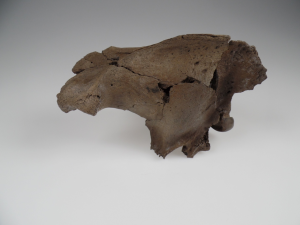Researchers reconstructed a skull of an European saber-toothed cat, Homotherium latidens, that was found at the Schöningen excavation site in Lower Saxony, Germany, in 2015.

It was believed that the species of the saber-toothed cat were extinct around 500000 years ago, but the recent discovery allowed researchers to establish that 300000 years ago, the saber-toothed cats were not as rare as previously thought. The animal was equipped with long claws, razor-sharp, curved canine teeth and was the size of a fully grown lion.

Researchers were able to reassemble the eleven bone fragments into an almost complete neurocranium. It is the third European saber-toothed cat specimen that was discovered. The remains were identified by comparing the reconstructed skull with recent and already extinct species of large carnivores. The interior of the skull reflects the shape and structure of the Homotherium brain. By examining the detailed brain structures, the team of scientists hopes to gain insights into the visual and hearing abilities as well as the feeding habits of the large cats.

The find is at present on display for the public in Schöningen as part of the special exhibition “The Ice Age Huntress”.
(after University of Tübingen, University of Leiden, PhysOrg, Science Daily & UPI)